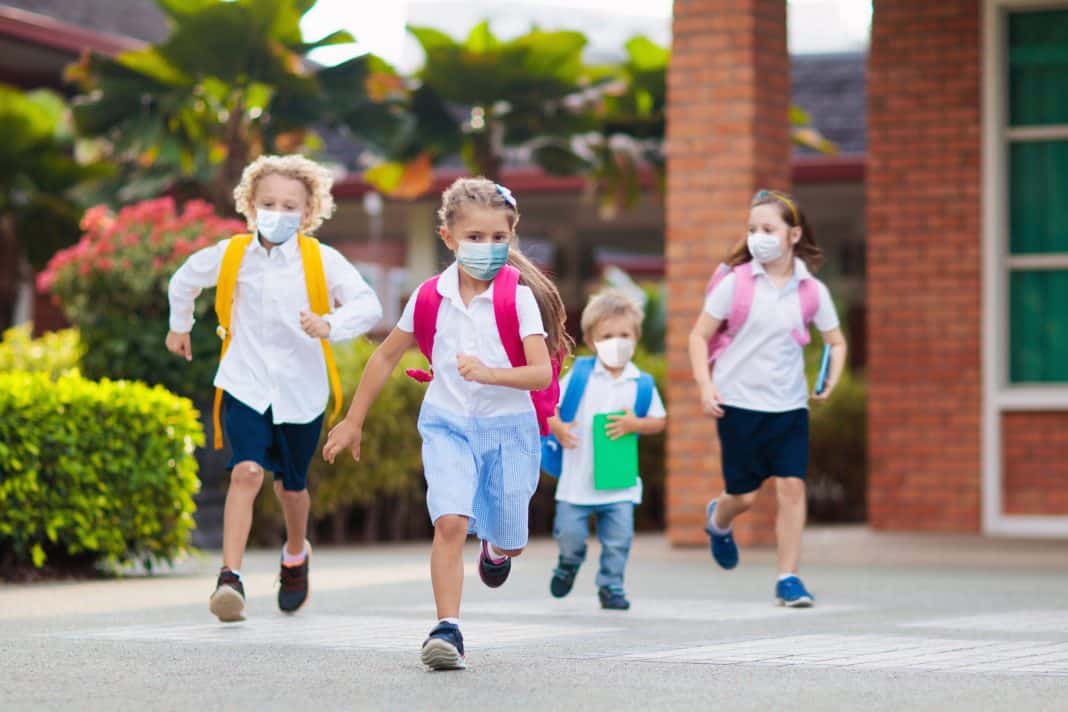As the school term approaches many parents will be starting to think about school uniforms and shoes. But what is the best option when it comes to kids’ school shoes?
According to research from the University of Sydney, children’s school shoes that allow more natural movement are the best choice, positively impacting children’s foot strength, muscle structure and balance as they grow.
Published in Gait and Posture, the randomised controlled trial of 70 school students aged 9-12 years found improved balance in students who wore minimalist, light and flexible shoes, compared to a traditional structured school shoe.
Lead author Dr Shayan Quinlan from the University of Sydney’s Faculty of Medicine and Health says previous research had shown the benefits of children going barefoot, but because this is not an option at school, research needs to explore the impact of children’s footwear design on musculoskeletal structure and function.
“Our study suggests the ideal shoe design for children would be sufficiently flexible to allow the foot to move similar to when barefoot whilst still protecting the foot from the elements and rough terrain,” says Dr Quinlan who completed the study as part of her PhD with the School of Health Sciences.
“This study is the first long-term research to investigate the effects of school shoe design, which is important because children spend a considerable amount of time in their shoes at school each weekday, potentially impacting their growth and development.”
About the study
Seventy boys and girls at an Australian school were randomly assigned to wear a standard or moderately minimalist school shoe over a nine-month period. The children wore the allocated shoes for a minimum of three days a week.
The standard or control shoe was characterised by polyurethane soles and leather uppers with laces. The minimalist shoe had a softer, shock-absorbing sole, with the upper made of a combination of textile, elasticated base and suede panels.
Senior author Dr Alycia Fong Yan, Co-director of the Sydney Biomechanics Laboratory, says the study aimed to determine the long-term effects of the two different shoe designs on toe flexor strength and intrinsic foot muscle structure, as well as on balance.
The researchers performed testing for these measures in January before school commenced and again in September.
“We saw significant improvements in balance in the children who wore the more minimalist shoe, and these improvements were linked with small improvements in toe flexor strength and muscle size,” shes Dr Fong Yan.
We predict these changes would likely be even more pronounced if the study was conducted in cultures that wear shoes more often, given that many Australian kids already reap the benefits of spending much of their leisure time barefoot.”
What should parents look for in school shoes?
Based on the study results the researchers recommend parents and carers look for a flexible shoe using the following pointers to identify the difference between available products.
- Weight: the lighter the shoe, the better
- Flexibility: ensure there is movement when you hold the toe and heel and rotate them in opposite directions and also try folding the show in on itself from toe to heel
- Structure: the smaller the height difference from the heel to under the ball of the foot the better
“However, it should be noted that very flexible or minimalist shoes are not ideal for all children or all conditions,” cautions Dr Quinlan.
“In general, more flexibility has been shown to be more beneficial long-term however if you have specific concerns about your child’s feet or development you should speak to your health professional.
“Our hope is that this study will raise awareness with parents and health professionals of the importance of the impact of footwear design on healthy foot development in children, as well as the need for further research and innovation in children’s footwear design.”







